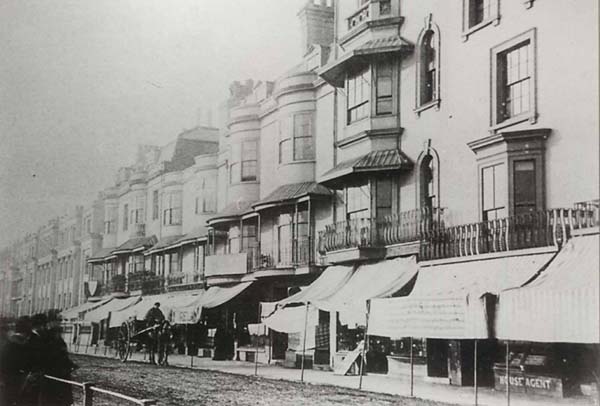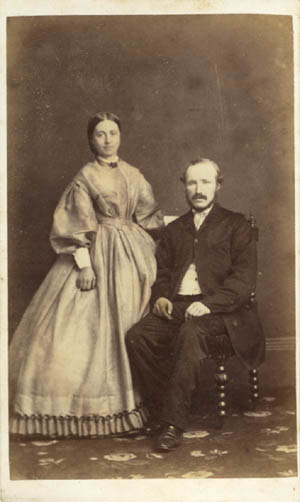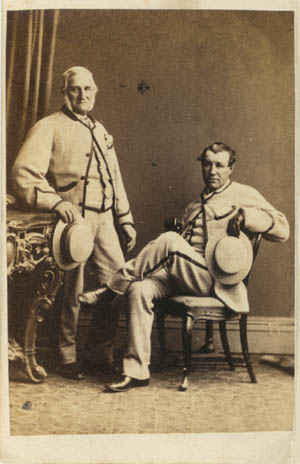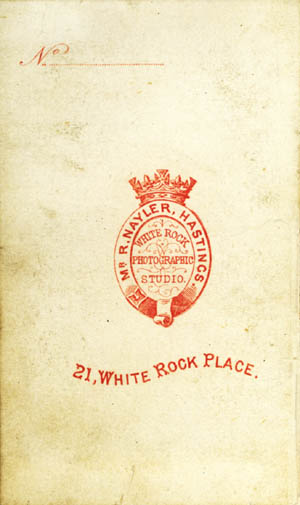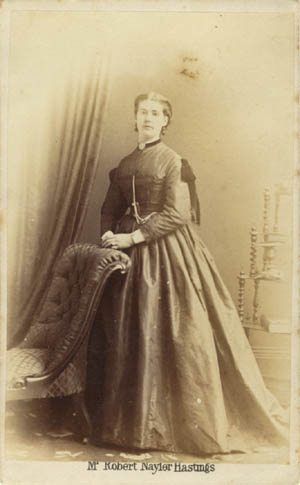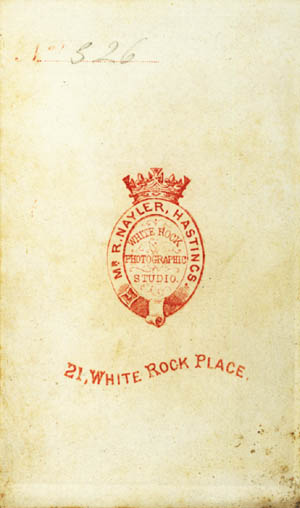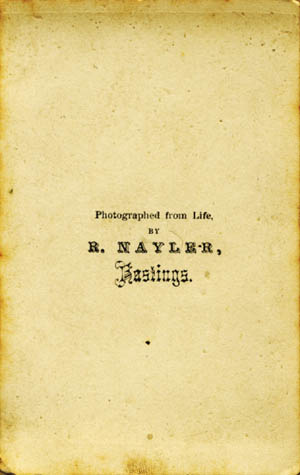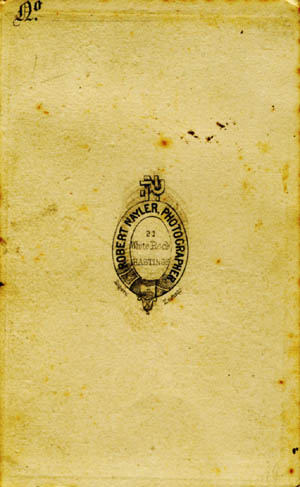Robert Nayler began his photographic career in London. In 1859, Robert Nayler opened his own studio at 178 Great Portland Street, St Marylebone, London . Nayler was still listed as a photographer at 178 Great Portland Street in a London trade directory issued in 1861. The 1861 census records Robert Nayler as a twenty-seven year old "Photographist" living with his first wife, Sarah Matilda Nayler (born c1834, Waterford Ireland), at 58 Bolsover Street, Marylebone, London. Robert's wife, recorded as "Matilda S. Nayler" on the census return, was working as a "Dress Maker". After closing his studio around 1861, Nayler might have found employment as a photographer in one of the London studios owned by Charles Thomas Newcombe (born c1830, Hoxton, London). [See entry on Charles Thomas Newcombe, below]. In May 1863, Charles Thomas Newcombe announced that he had opened "an establishment for First Class Photography"" at 22 White Rock Place, Hastings. Sometime between 1863 and 1865, Robert Nayler came down to Hastings to work as a studio manager in Newcombe's branch studio at 22 White Rock Place.
Early in 1866, Robert Nayler left Newcombe's employ and opened his own photographic portrait studio at 21 White Rock Place, Hastings, next door to his former employer's business premises. By this date, Newcombe had ended his association with Hastings and the studio at 22 White Rock Place, Hastings had been passed to Henry William Ashdown (1844-1908).

[ABOVE] Newspaper advertisement announcing the opening of Robert Nayler's photographic studio at 21 White Rock Place, Hastings.( Hastings & St Leonards News, 2nd March 1866 ). As this advertisement points out, Robert Nayler had previously been employed as a studio manager by the London photographer Charles Thomas Newcombe.
Early in March,1866, Robert Nayler placed advertisements in the local press informing the "Resident Gentry and Visitors of Hastings & St Leonards" that he had "opened a first-class studio" at 21 White Rock Place, Hastings. Charles Thomas Newcombe, Robert Nayler's former employer, had a good reputation as an accomplished portrait photographer and so Nayler was keen to emphasise the fact that he had been "Late Manager to Mr. C. T. Newcombe of London."
Like the majority of professional photographers working in Sussex at this time, Robert Nayler derived most of his income from the production of carte-de-visite portraits, small albumen prints mounted on thin white cards, measuring roughly 21/2 inches by 41/4 inches (6.3 cm by 10.5 cm). We do not know exactly how much Robert Nayler charged his customers for these carte-de-visite portraits, but during this period the average price for a dozen cdv portraits was 6 shillings (30p).[ See the chart on carte-de-visite prices,below ]
When Kelly's Post Office Directory of Sussex was published in October 1866, Robert Nayler was listed as a photographer at two establishments - 21 White Rock Place and 4 Trinity Villas, Hastings.
Robert Nayler's studio was in business as a professional photographer in Hastings for a relatively brief period. By the end of 1867, he had sold his studio at 21 White Rock Place to Frederick Treble (born c1830, Middlesex) and moved back to his home city of London.
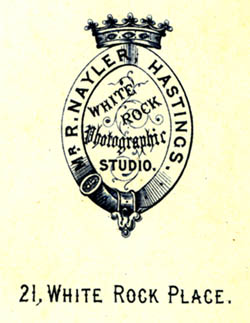
|
[ABOVE] Robert Nayler's trade plate, giving details of his White Rock Photographic Studio at 21 White Rock Place, Hastings (c1866). |
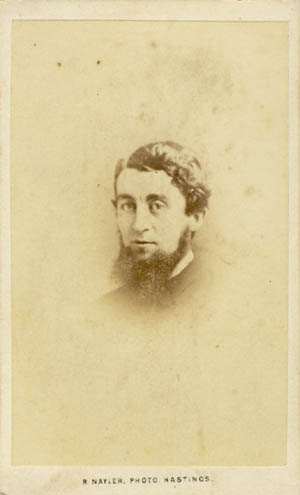
[ABOVE] Portrait of a bearded man, a carte-de-visite photograph by Mr R. Nayler, White Rock Photographic Studio, 21 White Rock Place, Hastings (c1866).


